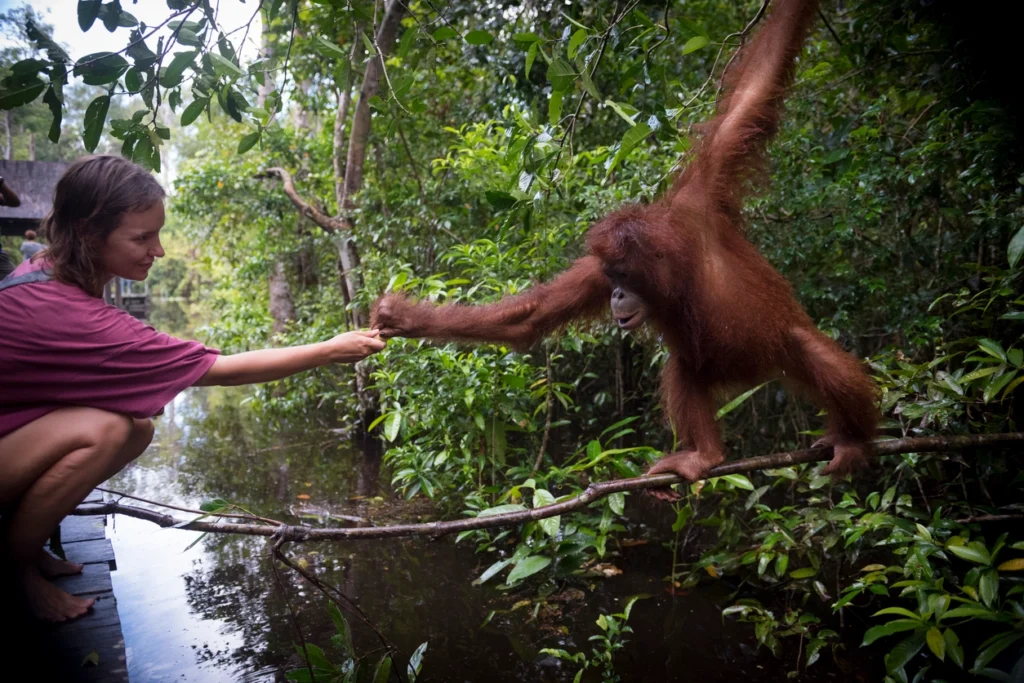Imagine you’re a doctor treating a patient. A vague desire to “make them feel better” won’t cut it. Successful conservation is the same – it demands more than just wishing for healthy ecosystems. Strategic action is the prescription for lasting impact.
This guide is geared towards land managers, conservation practitioners, and students eager to move beyond theory into the messy, rewarding realm of making a real difference. We’ll focus on strategies for addressing widespread challenges like habitat loss and human-wildlife conflict.
Many websites list conservation strategies, but here we go deeper. You’ll learn how to match the right tool to the task, navigate the complexities influencing success, and know when to seek expert help. Think of this as your field manual for turning knowledge into effective action.

The Foundations of Effective Strategies
SMART Goals
Before you can pick the best strategy, you need a crystal-clear destination. SMART goals (Specific, Measurable, Achievable, Relevant, Time-bound) provide that roadmap. Don’t just aim for “more birds” – aim for “a 10% increase in grassland bird nesting success within 3 years.”
Beyond Just Biology
The most brilliant ecological strategy will fail if it doesn’t account for the human dimension. Will it require land-use changes? Could it impact livelihoods? Successful strategies consider the economic, social, and even political landscape of the project area.
“Adaptive Management” Buzzword Busting
This phrase gets thrown around, but what does it really mean? It’s about being flexible. Monitor your results, learn as you go, and don’t be afraid to change course if something isn’t working. Think of it as conservation with a feedback loop.
Strategies for Common Conservation Challenges
Invasive Species Control
Invasive species can wreak havoc on ecosystems, outcompeting native plants, degrading wildlife habitat, and even altering entire landscapes. Left unchecked, they can cause significant economic losses for landowners and harm the biodiversity we all depend on.
Strategies – Pros & Cons:
- Mechanical Removal: This involves physically removing invasive plants through hand-pulling, digging, or mowing.
- Pros: It’s a direct approach, requires minimal specialized equipment, and can be effective for small infestations or sensitive areas.
- Cons: It can be extremely labor-intensive, especially for well-established invasives, and soil disturbance can sometimes encourage new weed growth.
- Targeted Herbicides: Herbicides can be an efficient way to control large infestations of invasive plants.
- Pros: They can work quickly and over broad areas.
- Cons: There’s a risk of harming non-target plants or impacting water quality. Herbicide selection and application require careful consideration to minimize unintended consequences. Public opinion can also be a major hurdle for this strategy.
- Biocontrol: This involves introducing carefully selected natural enemies (often insects or pathogens) of the invasive plant to suppress its population.
- Pros: If successful, it can provide long-term, self-sustaining control.
- Cons: It requires extensive research to ensure the biocontrol agent is safe and won’t negatively impact native species. This approach can take years to develop and may not be feasible for all invasive plants.

Mitigating Human-Wildlife Conflict
When humans and wildlife clash, it’s rarely a win-win situation. Animals can be injured or killed, people’s livelihoods (crops, livestock) may be damaged, and fear can erode public support for conservation. Finding solutions is essential for both wildlife wellbeing and healthy human communities.
Strategies – Tailored Solutions:
- Non-Lethal Deterrents: These can range from simple (fences, noisemakers, bright lights) to high-tech (livestock guardian animals, even drones!).
- Pros: Focus on changing animal behavior, can sometimes be a quick fix.
- Cons: Animals may adapt, effectiveness varies by species, and solutions need to be practical for people to use consistently.
- Compensation Schemes: Reimbursing farmers for livestock losses, or proactively paying for practices that reduce conflict (elephant-proof fencing…), can offset the costs people bear.
- Pros: Acknowledges the economic reality, can improve tolerance for wildlife presence.
- Cons: Requires funding, must be well-monitored to avoid fraud, and doesn’t always change the root cause of the conflict.
- Community-Based Solutions: These put local people at the forefront of managing the wildlife they live alongside.
- Pros: Builds local ownership, solutions are more likely to be sustainable long-term.
- Cons: Requires outside expertise (often from NGOs) to set up, and addressing deep-seated conflicts takes time.
Habitat Fragmentation
When once-continuous landscapes are divided by roads, development, or agriculture, it’s bad news for many species. Small, isolated populations are vulnerable to inbreeding, local extinctions, and can’t adapt to change (like shifting climate patterns). Habitat connectivity is key to long-term resilience.
Strategies – Reconnecting the Landscape:
- Wildlife Corridors: These protected strips of land allow animals to move safely between fragmented habitats.
- Pros: Can facilitate range shifts, boost genetic diversity… nature does the work!
- Cons: Requires buy-in across large areas, potential highway mortality, and may not be enough for highly sensitive species.
- Restoration on Private Lands: Even small-scale habitat creation on working farms or in suburban yards contributes to connectivity.
- Pros: Empowers individual action, incentive programs can make it financially viable for landowners.
- Cons: The ‘stepping stone’ approach may not be sufficient for the needs of all species.
- Land Acquisition or Conservation Easements: Securing key parcels to prevent future development maintains crucial links in the habitat chain.
- Pros: Provides the most lasting protection.
- Cons: Often the most expensive option, and requires identifying the highest priority areas.
From Plans to Action
Funding the Work
- Grants as a Lifeline
- Beyond the Big Names
- Realistic Budgets
Community as Partners
- The Power of People: Success is rarely achieved by lone conservation heroes. From volunteer workdays to citizen science data collection, tap into the public’s desire to help.
- Co-management Models: Highlight projects where decision-making is truly shared with Indigenous communities or other local stakeholders. This builds long-term support.
- “Not Just About Warm Fuzzies”: Community engagement can also be a source of essential local knowledge and reduce long-term management costs.
The Monitoring Gap
- Why It’s Not Optional: Too many projects fizzle out, not from failure, but from never knowing if they worked! Explain this in plain terms.
- Simple IS Powerful: Metrics don’t have to be complex to be useful. Examples: Bird surveys before/after restoration, photo monitoring points, landowner interviews for conflict reduction projects…
- Data as Your Story: Monitoring results are essential for securing future funding and refining your strategies.

When to Call in the Experts
Knowing Your Limits
- Honesty is Strength: It’s not a sign of weakness to admit when you’re out of your depth. The wrong decision made with “good intentions” can do more harm than good.
- Complexity is Real: Mention a few scenarios: large-scale population modeling for setting harvest quotas, designing surveys with statistical rigor, navigating complex environmental regulations… things beyond the self-taught skillset.
Finding the Right Help
- Tap Your Network: University researchers, staff at conservation NGOs, or government agencies may be willing to advise or collaborate.
- Professional Consultants: Especially helpful for time-bound projects with specific needs (designing a statistically robust monitoring program, for example).
- Directories Matter: Link out to directories of conservation consultants, or relevant professional societies where members may advertise expertise.
Your Conservation Journey Starts Here
You now have the tools to turn ecological knowledge into strategic action. Remember, conservation success isn’t about having all the answers from day one. It’s about a commitment to informed decision-making, building partnerships, and being willing to adapt along the way.
Whether you’re tackling a stubborn invasive plant, seeking coexistence with wildlife, or restoring a fragmented landscape, this guide has been your trail map. The journey may be long, but every step makes a difference.
Frequently Asked Questions About Conservation Management Strategies
I don’t have a science degree. Can I still be effective in conservation?
Absolutely! Conservation needs people with diverse skills. From communicating with the public, to fundraising, to negotiating land deals, there are countless ways to make a difference. The passion to learn and a willingness to collaborate are often more important than any specific diploma.
How do I set SMART goals when there’s so much uncertainty?
Focus on what you CAN control. You may not be able to predict rainfall, but you can aim for “planting X number of native trees by Y date.” Adaptive management means your goals can evolve, but starting with a clear direction is key.
“Community engagement” sounds messy. Isn’t it faster to just do it myself?
Sometimes, but not in the long run. Projects done to a community rarely last. By investing time upfront in building trust and incorporating local needs, your work is more likely to be protected and maintained for years to come.
I’m a student with no budget. What can I do?
Your time and knowledge are valuable! Volunteer for habitat restoration workdays, help monitor a local project, or use your skills (writing, web design, etc.) to support a small conservation organization. These experiences build your network for future opportunities.
I tried a strategy from my textbook and it failed. What now?
First, you’re not alone! Ecology is complex. Analyze WHY it might have failed (too small scale, didn’t address the main threat…), then either adapt your approach or seek advice from someone with experience tackling similar challenges. Failure is how we learn what works in the real world.